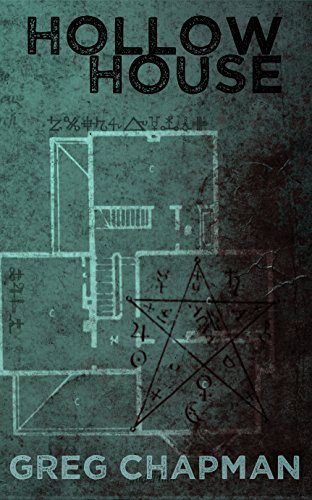
Greg Chapman
Omnium Gatherum
July, 2016
Reviewed by Michael R. Collings
Greg Chapman’s Hollow House gives readers a frightening new take on one of the most traditional horror motifs: The Bad Place.
On the surface, the Kemper House at number 72 Willow Street fits the requirements for a Bad Place. It is old—built in the late 1880s. It is dilapidated, if not outright derelict…except that, curiously, its windows are not broken out, as they would be if it were truly abandoned. Even more curious, it is almost unnoticed by the residents of Willow Street, present but not truly there, until the smell of death begins.
Within the first few pages of Hollow House, Chapman makes it clear that the Kemper House is not a static entity waiting for innocents to enter and be destroyed; it is active, it is intrusive in ways that Stephen King’s Marston House, for example, is not. It reaches beyond itself and, rather like Shirley Jackson’s Hill House, entices, pulls, draws, first with the horrific smell emanating from it, then with the mystery of the equally horrific body the police discover within.
But that is not all. Not only is the Kemper House active, it is hungry. It is not a “haunted house” in the conventional sense, replete with its complement of ghosts, specters, rattling chains, and things that go bump in the night. No, the Kemper house is, as the title makes clear, hollow, empty—and it wants to be filled with bodies and, more crucially, souls. And not just that: it can apparently shift through dimensions, appear in the other houses on Willow Street, or bring them into itself.
The residents of Willow Street react differently to the Kemper House’s increasing malevolence. One by one, they are drawn into its influence and change—or perhaps better said, become more intensely that which they were before.
Then comes the most chilling revelation of all (not really a spoiler). The Kemper House is not alone. There is another, identical in design, built by the same architect, across the town. And it, too, has a history of being nearly invisible, of horrific happenings that are somehow nearly forgotten, of not being noticed by those living nearby.
Hollow House is Chapman’s first novel. It promises much, and it delivers on its promises. Traditional yet unconventional, familiar in details yet eerily different and twisted, it does something entirely different with the Bad House…and makes it much Worse.
Given the number of its characters—and at the end, Chapman makes it clear why the novel must follow each of them—and its varied settings, merely plotting Hollow House would be a challenge for a long-time novelist; Chapman handles all of the ins and outs of his story with remarkable clarity, leaving readers eager for horror and darkness satisfied and, in his final twists, deeply discomfited.








